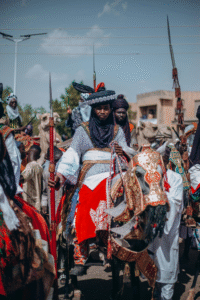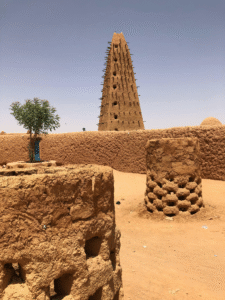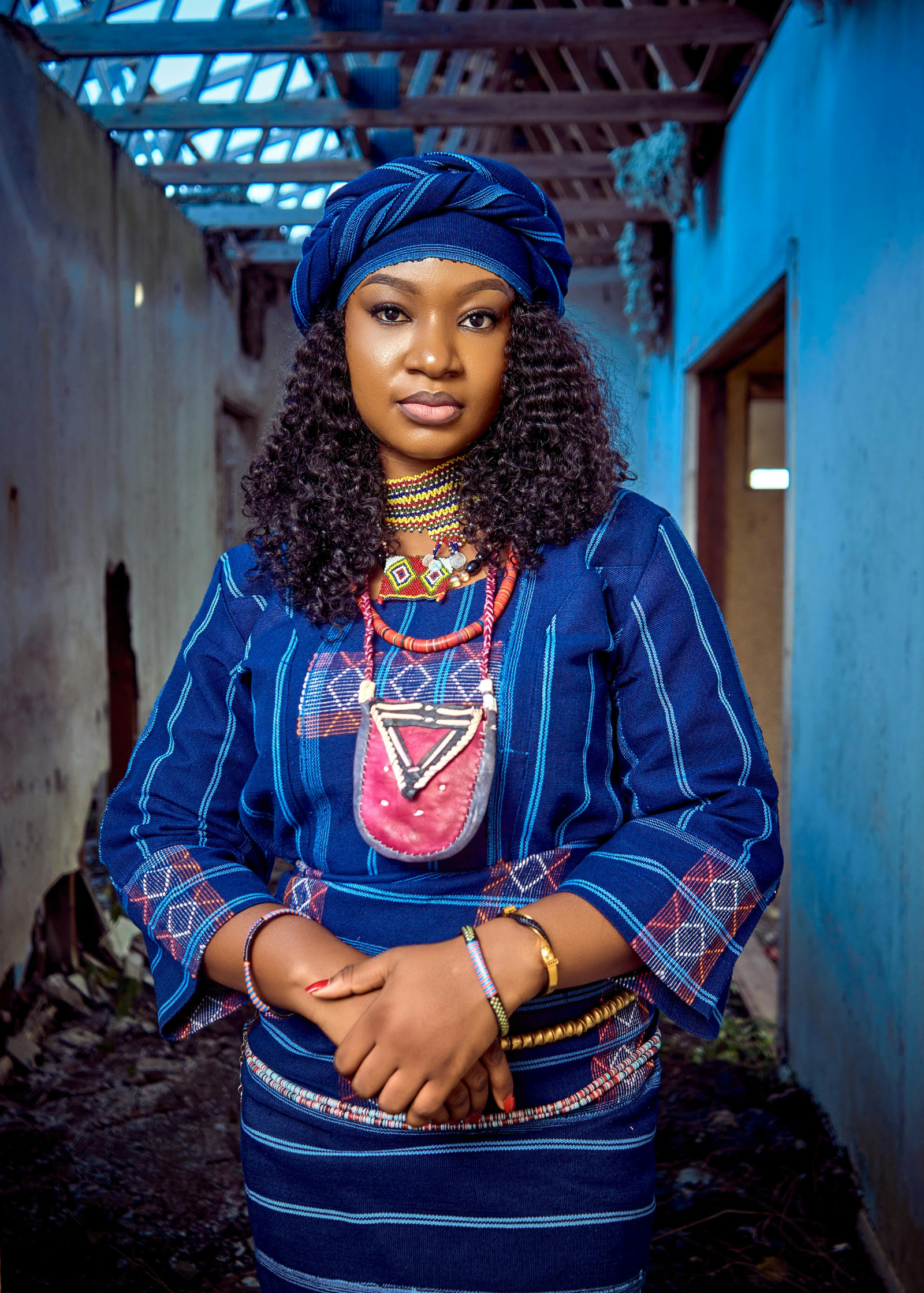Niger: A Land of Desert, Culture, and Resilience
Niger, officially known as the Republic of Niger, is a vast landlocked country in West Africa known for its sweeping desert landscapes, diverse ethnic groups, and rich cultural history. Despite facing economic and climatic challenges, Niger is a nation of resilience, deeply rooted in its traditions and positioned as a key player in the Sahel region. Named after the Niger River, which flows through its south western part, the country has an important historical and geopolitical role in the African continent.
Geography and Climate
Niger spans approximately 1,267,000 square kilometers, making it the largest country in West Africa and one of the largest on the African continent. It shares borders with:
- Algeria and Libya to the north
- Chad to the east
- Nigeria and Benin to the south
- Burkina Faso and Mali to the west
Landscape and Regions
Much of Niger lies within the Sahara Desert, especially the northern regions, which are dominated by sand dunes, rocky plateaus, and arid mountain ranges like the Aïr Mountains. The southern belt is more fertile and supports agriculture and higher population density. The Sahelian zone, a transition region between the Sahara and savanna, defines the central part of the country.

Climate
Niger has a hot desert climate in the north and semi-arid Sahelian climate in the south. Temperatures often exceed 40°C (104°F) during the dry season, and rainfall is highly seasonal, mainly occurring between June and September. Droughts are frequent and severely impact agriculture and livelihoods.
Population and Ethnic Diversity
As of 2025, Niger has an estimated population of over 26 million people. It is one of the fastest-growing populations in the world due to high fertility rates.
Major Ethnic Groups
- Hausa – the largest ethnic group, mainly in the south
- Zarma-Songhai – prominent in western regions around Niamey
- Tuareg – nomadic Berber people in the north
- Fulani (Peulh) – pastoralist group spread across the Sahel
- Kanuri, Toubou, and Gourmantche are also present
Languages
- French is the official language (due to colonial heritage)
- Indigenous languages such as Hausa, Zarma, Tamashek, and Fulfulde are widely spoken
- Arabic is used in religious contexts
Religion
Niger is a predominantly Muslim country, with about 98% of the population following Sunni Islam. Islamic traditions strongly influence daily life, culture, and the legal system. A small percentage of the population practices Christianity or indigenous African religions.
Historical Background
Ancient and Pre-Colonial Times
The region that is now Niger has been inhabited for thousands of years. Archaeological findings in the Aïr Mountains show evidence of human life dating back to the Stone Age. The area was once greener and supported early farming societies.
In medieval times, Niger was part of powerful West African empires:
- Songhai Empire
- Kanem-Bornu Empire
- Hausa city-states
These societies were involved in trans-Saharan trade in salt, gold, and slaves.
Colonial Era
In the late 19th century, Niger became part of French West Africa. It was declared a French colony in 1922 and remained under French control until it gained independence on August 3, 1960.
Political System and Governance
Niger is a semi-presidential republic, where power is shared between a president and a prime minister. The government consists of:
- Executive branch: President (head of state) and Prime Minister (head of government)
- Legislature: Unicameral National Assembly
- Judiciary: Independent constitutional court
Recent Political Developments
Niger has experienced several coups since independence. The most recent occurred in 2023, when the military ousted the elected government. Political instability, security concerns, and military involvement remain key challenges for democratic governance.
Economy
Niger’s economy is primarily agricultural, though it faces frequent disruptions due to drought, desertification, and poor infrastructure.
Key Economic Sectors
- Agriculture and Livestock
- Over 80% of the population depends on subsistence farming and livestock
- Major crops: millet, sorghum, cowpeas, and groundnuts
- Livestock includes camels, goats, sheep, and cattle
- Mining and Natural Resources
- Niger is one of the world’s top producers of uranium, an important global resource for nuclear energy
- Gold mining is expanding in recent years
- Oil exploration is underway in the Agadem Basin
- Trade and Services
- Trade with Nigeria and other ECOWAS countries plays a crucial role
- Informal sector is large and vital for local economies
Economic Challenges
- Landlocked geography limits trade
- Heavy reliance on agriculture makes the economy vulnerable
- Youth unemployment and poverty are widespread
- External debt and dependency on foreign aid
Culture and Society

Niger’s culture reflects a blend of African traditions and Islamic influence. Each ethnic group contributes unique customs, languages, music, clothing, and festivals.
Arts and Crafts
- Tuareg silver jewelry, leatherwork, and sword-making are highly valued
- Pottery, weaving, and basket-making are popular in rural areas
Music and Dance
- Traditional instruments include drums, flutes, and stringed lutes
- The Griot tradition (oral storytellers and musicians) is still practiced
- Modern genres like Hausa hip-hop and Tuareg guitar music are emerging
Festivals
- Cure Salée – an annual Tuareg and Wodaabe gathering of nomads in the desert
- Islamic holidays – Eid al-Fitr and Eid al-Adha are widely celebrated
Cuisine
Nigerien cuisine is simple, hearty, and based on local crops and livestock.
Popular dishes include:
- Jollof rice – spicy rice dish with vegetables and meat
- Fufu and tuwo – starchy meals made from millet or maize
- Grilled meat (suya) with spices
- Milk and yogurt from pastoral communities
Tea, especially mint tea, is a social beverage, particularly in Tuareg communities.
Education and Literacy
Education in Niger faces many barriers, including poverty, child labor, and limited infrastructure.
- Primary education is compulsory and free but often under-resourced
- Secondary and higher education access remains low
- Female education faces cultural and economic hurdles
Literacy Rate
As of recent estimates, adult literacy in Niger is under 40%, one of the lowest globally. However, reforms and international support aim to improve educational outcomes.
Healthcare
Niger’s healthcare system is underdeveloped, especially in rural areas. Access to quality medical services is limited, and life expectancy remains low.
Health Challenges
- High rates of malaria, malnutrition, and maternal mortality
- Frequent disease outbreaks, including meningitis
- Limited number of hospitals and trained healthcare workers
Government efforts, supported by international organizations, focus on vaccination campaigns, rural health clinics, and maternal health programs.
Transportation and Infrastructure
Transportation in Niger is constrained by its landlocked geography and underdeveloped infrastructure.
- Roads are the main mode of transport, though many are unpaved
- Niamey International Airport connects the country to international destinations
- A trans-Saharan highway links Niger to Algeria and Nigeria
- Rail projects are being developed to enhance regional trade
Electricity and internet access are improving but remain limited outside urban centers.
Tourism Potential
Though underexplored, Niger offers unique opportunities for adventurous travelers and cultural enthusiasts.
Key Attractions
- Agadez – an ancient city with mud-brick architecture and a famous mosque
- Aïr Mountains – stunning desert landscapes and prehistoric rock art
- Ténéré Desert – part of the Sahara with vast sand dunes
- W National Park – a UNESCO World Heritage Site shared with Burkina Faso and Benin, home to elephants, lions, and hippos
Security concerns have affected tourism, but local authorities are working to make travel safer.
Environmental Challenges
Niger is on the frontline of climate change and environmental degradation.
Major Issues
- Desertification threatens farmlands and grazing areas
- Deforestation due to firewood collection and farming
- Water scarcity in rural and arid regions
The government promotes reforestation, soil conservation, and sustainable agriculture through various programs supported by international partners.
Niamey: The Capital City
Niamey is Niger’s capital and largest city, situated along the Niger River. It serves as the country’s political, economic, and cultural hub.
Features
- Government institutions and foreign embassies
- Markets like Grand Marché offering local goods and crafts
- Museums and cultural centers highlighting Nigerien heritage
- Rapid urban growth but facing housing, water, and sanitation challenges
Conclusion
Niger stands as a symbol of endurance and cultural richness in the heart of West Africa. Though it grapples with poverty, climate change, and political instability, the spirit of its people remains strong. With vast natural resources, youthful energy, and international cooperation, Niger has the potential to write a new chapter in its development journey. As it balances tradition and modernity, this resilient nation continues to be a vital piece of the African puzzle.



